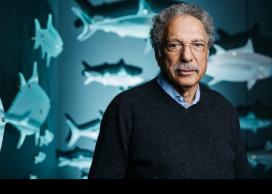Research in focus: Annie Ciernia
Learn more about the work of our researchers at UBC

March 29, 2021
Name:
Annie Ciernia
Title:
Assistant Professor
Department/Unit:
Biochemistry and Molecular Biology, Faculty of Medicine
Location:
Vancouver
What year did you start working at UBC?
2019
Provide an overview of your research in 75 words or less:
My research focuses on understanding how our genes and environment combine to shape our developing brains. My lab studies mechanisms that control how genes are expressed during normal brain development and in neurodevelopmental disorders. We use experimental and computational approaches to understand how gene expression is regulated in mouse models of childhood brain disorders. Findings from our work will help us understand the basic biology of brain development and form the basis for future development of novel therapeutics for brain disorders.
What first motivated you (or motivates you) to conduct your research?
I have been interested in gene regulation in the brain for a long time, but I first became excited about research in Autism and neurodevelopmental disorders as a postdoc. I received a fellowship that included spending time with clinicians, families and children with Autism. It was incredibly eye opening to realize how little we truly understand about what causes these disorders, and that there are so few treatment options for patients. It has motivated me to make this a central research question in my lab.
What do you hope will change as a result of this research?
Findings from our research will increase our understanding of the basic mechanisms regulating gene expression in the brain and form the basis for future development of novel targeted therapeutics for neurodevelopmental disorders such as Autism and intellectual disability. We hope that by uncovering new therapeutic targets for these disorders we can begin to help both patients and their families.
Are there any research collaborators you’d like to acknowledge and why?
I have recently started an exciting collaboration with Dr. Carolina Tropini’s lab to examine how pediatric Irritable Bowel Syndrome (IBD) impacts the microbiome, brain development and behaviour. She is an amazing collaborator and together we are developing the first mouse model of pediatric IBD and testing how colon inflammation can potentially influence brain development. We have some exciting preliminary results suggesting that early life colon inflammation disrupts communication between the gut microbiome and microglia, which are the immune cells of the brain.
What have you learned during your research that has surprised you the most?
As part of my postdoc I examined changes in DNA methylation in human postmortem brain from patients with neurodevelopmental disorders. I kept finding signatures of immune dysfunction, which I found super surprising at the time. I was trained as a neuroscientist and immunology in the brain wasn’t on my radar – but microglia (the brain’s immune cells) are an amazingly adaptable cell type in the brain that control processes critical for brain development. I found this cell type fascinating and it has become a focal point for research in my lab.
- Our people
- Research
- Research in focus






